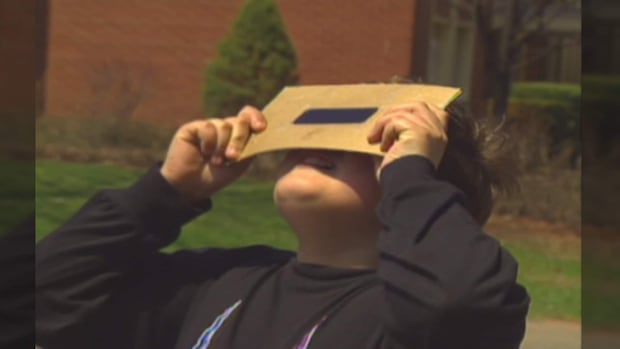Solar eclipse crosses over P.E.I., drawing spellbound crowds from tip to tip
A total solar eclipse made its way across the Island, with darkness falling over its west just after 4:30 p.m.
The much-anticipated total solar eclipse made its way across Prince Edward Island on Monday afternoon, with the darkness of totality hitting western P.E.I. just after 4:30 p.m., and a brief twilight falling elsewhere.
Tens of thousands of people beheld the cosmic spectacle from beaches, farms, hillsides and city boardwalks.
As the moon's position in the sky started to block Islanders' view of the sun, darkness gradually increased as more and more of the sun's powerful rays were obscured.
It was the last total solar eclipse visible from Prince Edward Island until May 1, 2079 — 55 years from now.
Totality lasted the longest — 3 minutes and 15 seconds — at North Cape, the most northwestern tip of the Island, after it started there at 4:35:43 p.m. AT.
The rest of western Prince County had shorter times to view the fully eclipsed sun, depending on how far each community was from the centre of the path of totality, according to a chart posted by the UPEI Physics Department.
UPEI physicists had said more than 99 per cent of the sun would be obscured everywhere on the Island when the phenomenon was at its strongest.
Quebec, New Brunswick and P.E.I. were among the few places on the North American path of totality where the weather co-operated with astronomers, boasting clear skies to allow for crisp viewing and photography.
For eye safety reasons, students on P.E.I. were dismissed from class two hours early because of the eclipse.
"Doing a system-wide early dismissal ensures our bus drivers will be off the road before the eclipse begins, and students will be home safely," Education and Early Years Minister Natalie Jameson said in a news release last month.
Police warned people who needed to drive during the event against becoming distracted by what was going on as a brief darkness fell hours before the usual sunset.
Traffic leaving western P.E.I. is expected to be heavy well into the evening, now that the eclipse has ended, police said.
Here are some useful links to CBC's full coverage of the historic event:




